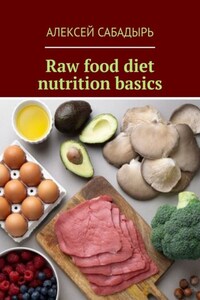Chapter 1: Introduction to Raw Food Diet
Welcome to the world of raw food eating! In this chapter, we will explore the basics of what raw food eating is all about and why it is gaining popularity as a healthy and sustainable way of nourishing your body and mind.
What is Raw Food Diet?
Raw food diet, also known as raw foodism or raw veganism, is a dietary approach that emphasizes consuming unprocessed and uncooked food. This includes fruits, vegetables, nuts, seeds, sprouted grains, and legumes, as well as seaweed, fermented foods, and some raw animal products (for those who include animal products in their diet). The key principle of raw food eating is to maintain the natural integrity of foods by keeping their nutrients intact through minimal processing and cooking at low temperatures.
The idea behind raw food diet is that heating food above 118° F (48° C) destroys its enzymes, denatures its nutrients, and reduces its beneficial properties. Raw food enthusiasts believe that consuming a diet predominantly made up of living and uncooked foods can lead to better health, increased energy levels, and overall well-being.
A Brief History of Raw Food Eating
While raw food diet may seem like a recent trend, its roots stretch back to ancient civilizations where traditional diets consisted largely of raw, unprocessed foods. In the early 20th century, a Swiss nutritionist named Maximilian Bircher-Benner popularized the concept of raw food eating as a means to promote health and healing. His famous muesli recipe (consisting of raw oats, nuts, fruits, and yogurt) became a staple of the raw food movement and is still enjoyed today.
In the 1970s, the modern raw food movement gained momentum, with influential figures such as Ann Wigmore, Viktoras Kulvinskas, and David Wolfe advocating for the health benefits of raw food consumption. Since then, the popularity of raw food diet has continued to grow, with numerous cookbooks, blogs, and documentaries celebrating its virtues.
Types of Raw Food Diets
Raw food diet can take on various forms, and individuals may choose to follow different variations based on their preferences, lifestyle, and health goals. Some common types of raw food diets include:
Raw vegan diet: This approach excludes all animal products, including meat, dairy, and eggs, and consists mainly of fruits, vegetables, nuts, seeds, and sprouted grains.
Raw vegetarian diet: Similar to raw veganism, but some individuals may include raw dairy products and bee products like honey in their diet.
Raw omnivorous diet: This diet includes raw animal products such as raw fish, raw milk, and raw eggs, in addition to fruits, vegetables, nuts, seeds, and sprouted grains.
Raw paleo diet: This diet focuses on consuming raw, unprocessed foods that were available to our Paleolithic ancestors, such as fresh fruits, vegetables, nuts, seeds, and raw animal products. It excludes grains, legumes, and processed foods.
The Benefits of Raw Food Nutrition
Raw food diet is associated with a wide range of potential health benefits, which may include:
Increased nutrient intake: raw foods are rich in vitamins, minerals, antioxidants, and enzymes that can be compromised by cooking. Consuming a variety of raw fruits, vegetables, and other plant-based foods can provide an abundance of essential nutrients for optimal health.
Improved digestion: many people find that raw food diet can lead to improved digestion, as raw foods contain natural enzymes that support the body’s digestive processes. Additionally, the high fiber content in raw plant foods can help promote regular bowel movements and overall digestive health.
Enhanced energy levels: some individuals report feeling increased energy and vitality when they adopt a raw food diet. This is often attributed to the abundance of nutrients and living enzymes present in raw foods, which can support the body’s natural energy production.
Potential weight management: raw food diet, particularly when centered around whole, unprocessed foods, may support healthy weight management. The emphasis on nutrient-dense, high-fiber foods can help individuals feel satisfied and maintain a healthy body weight.
Reduced risk of chronic diseases: a diet rich in raw fruits, vegetables, nuts, and seeds has been associated with a lower risk of chronic conditions such as heart disease, diabetes, and certain types of cancer. The potent antioxidants found in raw plant foods can help protect the body from oxidative stress and inflammation, which are underlying factors in many chronic diseases.
Getting Started with Raw Food Eating
Transitioning to a raw food diet can be an exciting and transformative journey, but it may also present challenges and questions for those new to this way of eating. Here are some tips to help you get started with raw food eating and set yourself up for success:
Educate yourself: take the time to learn about the principles and practices of raw food eating. There are numerous books, online resources, and communities dedicated to raw food diet that can provide valuable information and support as you embark on this journey.














